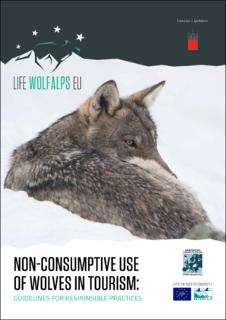| dc.description.abstract | In many early European cultures, humans shared an overall positive view of the wolf (Boitani, 1995; Boitani and Ciucci, 2009). But this changed with the anthropocentric view of nature brought about by Christianity as well as with the process of domestication and the advent of extensive animal husbandry (Boitani, 1995). Wolves were then strongly persecuted, leading to their extirpation in almost all their former range across the continent. In the last few decades, however, wolves have returned to many parts of Europe from which they had been absent for centuries. Their recovery impacts a range of human activities and interests and is accompanied by a variety of social conflicts and diverging points of view on how wolves should be managed (Boitani and Linnell, 2015; Linnell and Cretois, 2018). Conflicts and the negative economic impacts of wolf damage to livestock are the most pressing problems for wolf management today. Public debate and academic research on wolf–human relations tend to focus on these issues (Rode et al., 2021). The ecological roles of wolves in ecosystem structure and functioning are increasingly recognized (Hebbelwhite et al., 2005; Kuijper et al., 2013). However, although predator-prey interactions are highly contextdependent, most studies on this topic have been undertaken in large, natural landscapes. In most of Europe, human actions attenuate the ecological effects of large carnivores (Kuijper et al., 2016). Nevertheless, new values and the potential social benefits of human–wolf coexistence are underappreciated. Wolves are an important generator of culture, ethnography and tradition (Álvares et al., 2011) and their presence brings educational and research benefits, income from regional and product marketing, as well as socio-economic benefits from wildlife tourism (Rode et al., 2021). Different forms of tourism associated with wolves, such as wolf watching, photographing, or observing signs of their presence have already been practiced for a couple of decades in North America (Wilson and Heberlein, 1996) and to a lesser extent in Europe (Koščová and Koščová, 2016; Bavo and Villar Lama, 2020; Notaro and Grilli, 2021). Although tourism can increase the value of the species locally, such activities can also have negative impacts on wolves and their habitat, especially with the growing demand for wildlife tourism (Curtin and Kragh, 2014). The following guidelines were prepared by members of the LIFE WOLFALPS EU project group and the Large Carnivore Initiative for Europe expert group of the IUCN/SSC to set specific recommendations for responsible non-consumptive use of wolves in tourism which has as little impact on wolves as possible. The aim of these guidelines is to promote tourism activities that go beyond direct sightings of wildlife by focusing on wolf presence and wolf-related cultural heritage, creating economic opportunities for local communities in areas with wolves and consequently leading to increased tolerance towards this species. | en_US |
